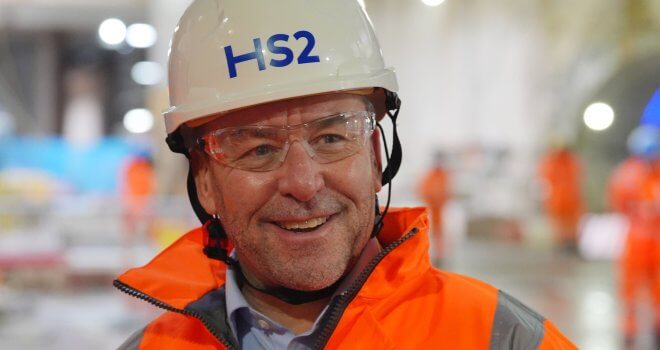Maximiser Or A Satisficer? Effective Decision Making

There are two main types of decision-makers: Maximisers and Satisficers and whichever you identify as will determine your approach to how you make decisions and will influence and impact your work, and the business.
Whilst individuals naturally have a more dominant decision-making style, we often have characteristics of both (like introversion and extroversion), depending on the situation, but employers tend to search for an individual with greater maximiser qualities without understanding the pitfalls of the pressure that maximisers often put themselves under or appreciating the value of diversity.
So what are the differences between a maximiser and a satisficer and is one better than the other?
Satisficers
The ‘satisficing’ concept was first proposed by the U.S. Nobel Prize-winning economist Herbert A. Simon, in 1956. Simon believed that when satisficers are presented with a decision, they will consider what they want to gain or maintain from a situation and then choose the solution to meet their needs or requirements. Satisficers often choose the option that is deemed ‘good enough’.
A satisficer may go to a coffee shop and instead of reading through the entire menu, they may easily choose what others are ordering but fail to consider that they may be better alternatives if they read the entire menu. They use mental shortcuts acquired from previous experiences to make decisions quickly. This type of decision-making helps with quick, day-to-day decisions where only basic criteria need to be met without looking into too much detail. Decisions are often made efficiently but may be based on limited information.
Maximisers
Maximisers aim to always make the ‘perfect’ choice with the best possible outcome. A maximiser might go to a coffee shop, read the whole menu, ask the waiter multiple questions about dishes, consider what their needs are that day and then decide. They tend to be precise and thorough and take the time to evaluate all the options to select the most appropriate and beneficial approach. This style of decision-making is beneficial in high-stake circumstances and where a longer-term viewpoint is needed and is typically found in leaders.
Taking time to make a decision may mean deeper thinking, making better decisions, reducing conflict and enhancing creativity, but taking this to an extreme means procrastinating which may cause missed deadlines, poor productivity, regret at the decision they made and negative self-belief. Maximisers also succumb to burnout more commonly due to the extra stress and planning that goes into their work. Maximisers get better jobs but are often less satisfied with their work.
What is Enough?
Social media informs us of everyone else’s successes meaning many of us have lost a sense of what is enough. Maximisers tend to be motivated by achievement and recognition in the workplace but experience lower levels of happiness and higher regret levels compared to satisficers, who are more motivated by work-life balance and personal growth.
Critics argue that billionaires (often the ultimate in maximisers) represent a failure which embodies the negative aspects of capitalism and greed. Equally, should businesses reap the rewards of maximiser workers who agree to be on call 24-7 when the personal cost to those workers can be enormous?
Conversely, satisficers may not necessarily fulfil their true potential but often live a less stressful life. It is worth noting the perceived generational difference between Generation X and Baby Boomers (typically known for being maximisers) vs Millennials and Gen Z (who prefer experience and the journey rather than material outcomes and look for a sense of meaning).
Maximiser – Who Are You Satisficing? Yourself Or Others?
Who determines what suffices? Many maximisers are fiercely driven which as we already know means that they may give everything they have for the job or for the recognition they crave. Most uber-successful people can never be satisfied which is what drives them for more and more.
Equally productivity theatre can come into play where employees strive to showcase their productivity and dedication by prioritising tasks that enhance their visibility, often at the expense of focusing on work that holds greater value for the overall success of the business.
How To Get The Balance Right In The Workplace:
Identify the appropriate situation – Look at the decision that needs to be made and adapt your approach. Situations with high stakes or requiring elevated levels of precision may need you to wear your maximiser hat, whereas being satisfied as your benchmark may better suit low-important decisions needing speed and efficiency.
Learn how to be flexible to find the right balance. One solution is to predominantly adopt a satisficing approach to meet daily requirements and reserve the maximising approach for high-stakes situations that greatly impact our lives. By avoiding impulsive decisions and striking a balance between careful consideration and decisiveness, we can make more effective choices. Maximisers should consider reducing the number of options available and satisficers could contemplate the advantages and disadvantages of potential outcomes more.
Notice when you’re overworking – Maximisers often take an unnecessary amount of time making decisions, causing them to work longer hours to complete tasks, potentially leading to burnout. There is also a point of diminishing returns, where additional information is not likely to lead to a better outcome, so stopping while you are ahead can be advisable.
Block out Time and set clear goals. Clear timings and goals mean maximisers can stop themselves from spending too much time making ‘perfect’ decisions or overanalysing, whilst satisficers can spend enough time making hasty decisions to enable them to work more effectively.
Ask for help – Taking a step back to come to a decision rationally and asking others for help or support can be beneficial. By having input from others, you can avoid blind spots in decision-making and ensure you consider all the relevant factors, with 75% of businesses saying collaboration and teamwork are critical to their success.
Look internally to make good decisions. Striving for perfection can impede our ability to be happy. For most basic decisions it is better to listen to our gut feelings and to evaluate the merits of just a few outcomes so we can feel satisfied and move on.
What Businesses Can Do
Change the narrative around busy culture. While action-oriented, industrious individuals are often praised, it is crucial to recognise that every moment does not need to be filled with constant activity. Taking time to recharge or think is essential for achieving optimal performance.
Working excessively, neglecting work-life balance, and denying our minds and bodies the opportunity to recover is unsustainable and should not be portrayed as positive or praiseworthy. A responsible and supportive employer will prioritise their employees’ well-being, ensuring they are not overwhelmed or treated as expendable.
Importance of strong leadership – Leaders need to focus on implementing different strategies for decision-making which prioritise quality over quantity for positive change. Over 80% of employees say they enjoy their work more when their employers are engaged in their wellness.
Create a positive environment. Maximisers and satisficers both thrive when they are in a motivating environment and surrounded by others that support them. Encourage teamwork so colleagues can work together to make good decisions and individuals can benefit from each other’s experience, guidance and support.
Clarify and prioritise. Managers should recognise that the to-do list is perpetual and acknowledge the limitations of what can be accomplished in a single day by clarifying priorities, reducing the pressure and finishing the day’s work at a reasonable time regardless of how long the list still is.
Thom Dennis, CEO of culture and leadership specialists, Serenity in Leadership.




